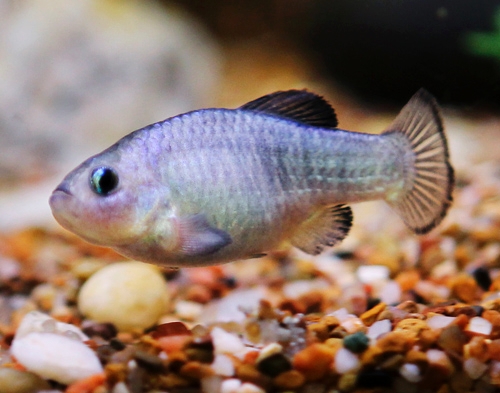Devil’s Hole pupfish losing struggle for survival
Despite decades of work and millions of dollars spent, researchers may be losing their fight to save the endangered Devil's Hole pupfish from extinction.
Ted Koch, supervisor of the U.S. Fish and Wildlife Service in Nevada, said this week he doesn't know whether the tiny fish can be saved.
"I'm worried it may be an emergency," said Koch, "and I don't know whether there are enough of them left to still be viable. We're definitely very concerned."
His comments came on the heels of a population survey that turned up just 75 adult pupfish in the species' only native habitat - a single, water-filled cavern in North America's hottest, driest desert about 90 miles west of Las Vegas. It was the lowest fall count on record for the inch-long, neon-blue fish, which came under federal protection in 1967.
A year ago, there were 119 pupfish. The fall count in 2003 showed almost 300.
The Fish and Wildlife Service, National Park Service and Nevada Department of Wildlife jointly manage efforts to protect the fish and its home. Koch said representatives from those agencies will meet in late December to discuss what should be done to halt the species' decline.
"We have to decide do we let things ride or do we take some action," he said.
Their options are limited.
So far, efforts to bolster the population in the wild have failed, and researchers cannot seem to keep pupfish alive in captivity, let alone breed them.
"These fish do not do well in aquarium," said Kevin Wilson, a Death Valley aquatic ecologist for the National Park Service. "It's practically a failure."
The big challenge is re-creating and maintaining the fish's highly specialized habitat. Devil's Hole extends more than 430 feet underground, but the fish find most of their food and do most of their spawning near the surface on a limestone shelf roughly 5 feet wide and 18 feet long.
Geothermal heat warms the water to about 93 degrees, and dissolved oxygen is scarce.
"The fish does its best where it lives, so what do you do?" Wilson said. "It's difficult to have a Hail Mary pass because there's nowhere to throw the ball."
The pupfish population peaked at 544 in the fall of 1990 and began to decline in 1996 for reasons researchers still can't explain.
The numbers slipped below 150 in 2004, when scientists mistakenly left a container of fish traps next to Devil's Hole and a flash flood dumped the traps into the pool. Almost 40 fish, roughly a quarter of the population, were trapped and killed in the incident.
The spring count two years later showed just 38 pupfish, an all-time low for the species, but by fall, the population had rebounded to 85, 10 more than this year's total.
Koch called the pupfish "the rarest vertebrate species on the planet."
Its protection predates the Endangered Species Act. Its home has been designated as part of Death Valley National Park and surrounded on all sides by Ash Meadows National Wildlife Refuge in Nye County.
Researchers have been counting fish and recording the water level in Devil's Hole for the past 40 years, Wilson said, but comparatively little work was done over the years to understand the fish's life cycle and the biological system that sustains it.
The population decline has complicated such study because researchers can't risk handling the tiny fish or sacrificing any more of them in the interest of science.
Some people believe the species has already shrunk beyond the point of genetic viability, but Wilson disagrees.
He remains hopeful that the pupfish can be saved and believes humans have an obligation to try because they have played a role in the creature's decline.
Groundwater pumping near Devil's Hole was halted in the early 1970s, triggering a legal fight that landed in the U.S. Supreme Court, where the justices sided with the government and ordered the pumps to be silenced. But Wilson said the water level in Devil's Hole never came back to where it was before. It's still about a foot lower than it was before the pumping.
As for what might be causing this year's decline, Wilson and company can only speculate. One prevailing idea is that the fish's food and spawning beds were disturbed by flood debris in August and by several distant but strong earthquakes earlier this year that sent water sloshing in the pool.
A March 20 quake in the mountains east of Acapulco, Mexico, churned two-foot waves at Devil's Hole, some 1,700 miles from the epicenter.
"That's kind of our gut feeling," Wilson said.
It's unclear exactly how much money has been spent on the Devil's Hole pupfish over the years, but Koch said it is "many millions" of dollars.
Saving the fish has always been a dicey proposition, he said. "It's been so close to extinction for so long. It's a Pleistocene relic that was hanging on by the tip of a fin when the first European settlers arrived."
Researchers are encouraged by the healthy condition of the remaining pupfish, but confidence seems to be wavering a little bit.
"To answer the question, I hope we're not out of time," Wilson said. "I don't believe we are out of time, but obviously it's concerning."
Contact reporter Henry Brean at hbrean@reviewjournal.com or 702-383-0350.

















